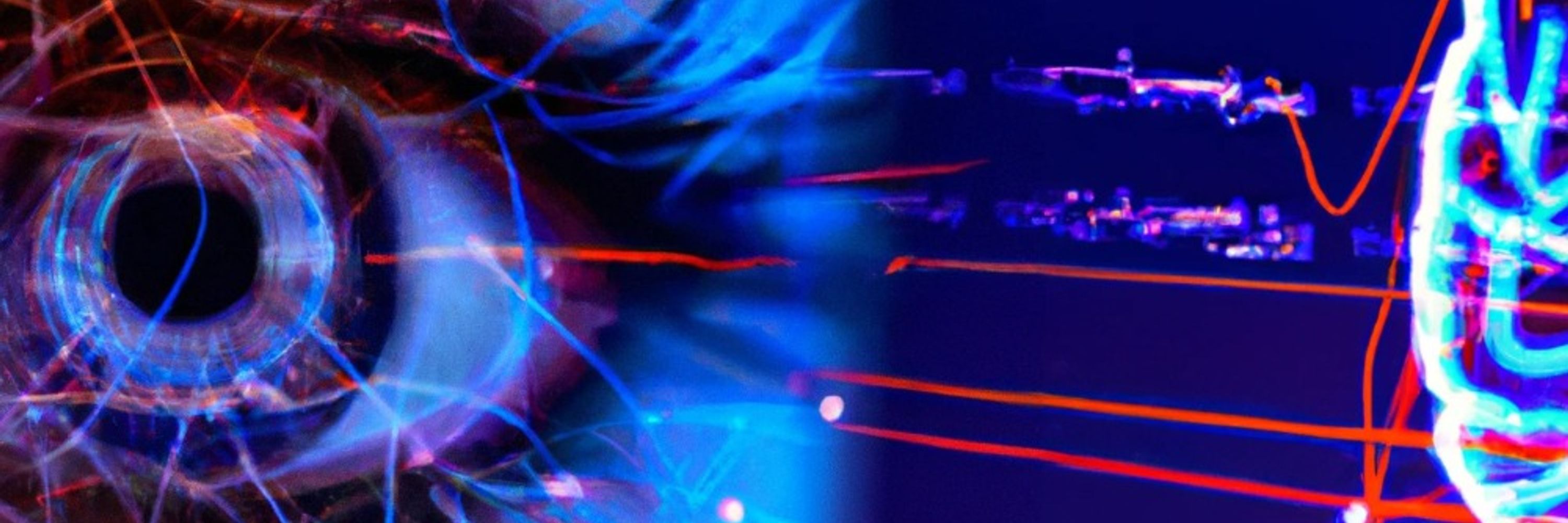
Bilal Haider
@haiderlab.bsky.social
Neurons, circuits, visual perception | Associate Professor, Georgia Tech & Emory University, Atlanta, USA | haider.gatech.edu
Posting about #neuroscience research, mentoring, science advocacy.
Posting about #neuroscience research, mentoring, science advocacy.
(8/10) Whole-cell patch-clamp recordings from excitatory neurons in awake mice showed that activating SST lateral inhibition (~1mm away) caused greater hyperpolarization – and this was because of larger synaptic inhibition from SST neurons!

March 3, 2025 at 4:59 PM
(8/10) Whole-cell patch-clamp recordings from excitatory neurons in awake mice showed that activating SST lateral inhibition (~1mm away) caused greater hyperpolarization – and this was because of larger synaptic inhibition from SST neurons!
(6/10) So—why is SST lateral inhibition more effective at decreasing contrast sensitivity? We made a computational model, and asked if effects of SST neurons were due to inhibition of excitatory neuron dendrites, OR due to a higher probability of lateral inhibitory connections...

March 3, 2025 at 4:59 PM
(6/10) So—why is SST lateral inhibition more effective at decreasing contrast sensitivity? We made a computational model, and asked if effects of SST neurons were due to inhibition of excitatory neuron dendrites, OR due to a higher probability of lateral inhibitory connections...
(4/10) We found something surprising! PV lateral inhibition decreased perceptual sensitivity to all contrasts uniformly – like subtracting a constant.
But SST lateral inhibition scaled ALL contrasts more strongly – exactly like dividing the function by a scaling factor, which changes its slope
But SST lateral inhibition scaled ALL contrasts more strongly – exactly like dividing the function by a scaling factor, which changes its slope

March 3, 2025 at 4:59 PM
(4/10) We found something surprising! PV lateral inhibition decreased perceptual sensitivity to all contrasts uniformly – like subtracting a constant.
But SST lateral inhibition scaled ALL contrasts more strongly – exactly like dividing the function by a scaling factor, which changes its slope
But SST lateral inhibition scaled ALL contrasts more strongly – exactly like dividing the function by a scaling factor, which changes its slope
Interesting ... imposing excitatory / inhibitory constraints to latent dynamical systems does a better job at predicting neural + behavioral data.
Could link abstract latent models to the classic, biologically interpretable E-I recurrent circuit models... 🧠 if that's what you care about 😉
Could link abstract latent models to the classic, biologically interpretable E-I recurrent circuit models... 🧠 if that's what you care about 😉

December 7, 2024 at 5:34 PM
Interesting ... imposing excitatory / inhibitory constraints to latent dynamical systems does a better job at predicting neural + behavioral data.
Could link abstract latent models to the classic, biologically interpretable E-I recurrent circuit models... 🧠 if that's what you care about 😉
Could link abstract latent models to the classic, biologically interpretable E-I recurrent circuit models... 🧠 if that's what you care about 😉
How does the brain build internal maps of external space, then adjust them for eye + head + body movement during behavior?
A nice review of evidence across species
🧠#neuroscience
A nice review of evidence across species
🧠#neuroscience

December 2, 2024 at 8:22 PM
How does the brain build internal maps of external space, then adjust them for eye + head + body movement during behavior?
A nice review of evidence across species
🧠#neuroscience
A nice review of evidence across species
🧠#neuroscience
New ways to target inhibitory neuron subtypes in 🐭,🐵,🧍♀️... including the elusive & mysterious "chandelier cells" that directly inhibit *axon spike initiation* in excitatory neurons 🙅♂️
Yet another success of NIH BRAIN Initiative collabs 🧠(Armamentarium) PREPRINT 👇
Yet another success of NIH BRAIN Initiative collabs 🧠(Armamentarium) PREPRINT 👇

November 24, 2024 at 3:07 PM
New ways to target inhibitory neuron subtypes in 🐭,🐵,🧍♀️... including the elusive & mysterious "chandelier cells" that directly inhibit *axon spike initiation* in excitatory neurons 🙅♂️
Yet another success of NIH BRAIN Initiative collabs 🧠(Armamentarium) PREPRINT 👇
Yet another success of NIH BRAIN Initiative collabs 🧠(Armamentarium) PREPRINT 👇
🙋🏻♂️ me too please
⬇️ not a whole rig but an important bit nonetheless
⬇️ not a whole rig but an important bit nonetheless

November 22, 2024 at 1:07 PM
🙋🏻♂️ me too please
⬇️ not a whole rig but an important bit nonetheless
⬇️ not a whole rig but an important bit nonetheless
A stunning finding from human cortex: SST inhibitory neurons lost first in Alzheimer's... even earlier than excitatory neurons.
Thanks to NIH BRAIN (BICCN, BICAN), @alleninstitute.bsky.social and a huge team of investigators (50+ NIH awards), well done for 🧠 science!
doi.org/10.1038/s415...
Thanks to NIH BRAIN (BICCN, BICAN), @alleninstitute.bsky.social and a huge team of investigators (50+ NIH awards), well done for 🧠 science!
doi.org/10.1038/s415...

November 19, 2024 at 1:57 AM
A stunning finding from human cortex: SST inhibitory neurons lost first in Alzheimer's... even earlier than excitatory neurons.
Thanks to NIH BRAIN (BICCN, BICAN), @alleninstitute.bsky.social and a huge team of investigators (50+ NIH awards), well done for 🧠 science!
doi.org/10.1038/s415...
Thanks to NIH BRAIN (BICCN, BICAN), @alleninstitute.bsky.social and a huge team of investigators (50+ NIH awards), well done for 🧠 science!
doi.org/10.1038/s415...
Ready for SFN Chicago with exciting new work on visual space & attention... stop by and say hi 👋 and spread the word to grad students looking for systems neuro postdoc labs 👇 🧠 #neuroskyence

October 3, 2024 at 9:08 PM
Ready for SFN Chicago with exciting new work on visual space & attention... stop by and say hi 👋 and spread the word to grad students looking for systems neuro postdoc labs 👇 🧠 #neuroskyence

